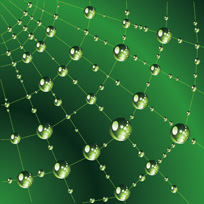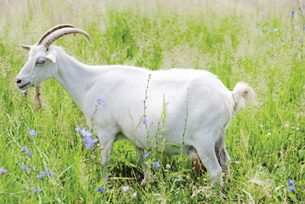Module 7
1. Module 7
1.11. Page 3
Module 7—Molecular Genetics: DNA, RNA, and Protein Synthesis
 Watch and Listen
Watch and Listen
This “Protein Synthesis” animation illustrates the translation process. Note how the anticodon on the tRNA molecule and the codon on the mRNA are complementary to one another. Pay attention to the slowly forming polypeptide (protein) from the bonding amino acids. You may need a password and username to access the LearnAlberta website. Contact your teacher for these. Store the information reviewed in the animation in any format you choose in your course folder for review.
Watch the video “Protein Synthesis: Translating the Code.” This video also describes translation, and it includes a review of both transcription and translation at the end of the video. You will find that watching the complete video is an excellent summary of the concepts of this lesson. You may need to contact your teacher in order to get a password and username to access the LearnAlberta website.
 Module 7: Lesson 3 Assignment
Module 7: Lesson 3 Assignment
RNA and Protein Synthesis Simulation
Open the “RNA and Protein Synthesis Gizmo.” Read carefully through the Exploration Guide and follow the steps described.
Retrieve the copy of the Module 7: Lesson 3 Assignment that you saved to your computer earlier in this lesson. Complete the questions in Part 1, “RNA and Protein Synthesis Simulation,” as you move through the gizmo. Save your completed assignment in your course folder. You will receive instructions later in this lesson about when to submit your assignment to your teacher.
 Self-Check
Self-Check
SC 5. To practise your understanding of the steps in protein synthesis, complete the three parts of the Self-Check activity “Type of RNA.” Check your answers as you complete the activity.
 Reflect and Connect
Reflect and Connect
Transcription in Reverse
To practise your skills with transcription, reflect on the results of working backward from an amino acid sequence toward the original DNA sense strand. You will follow the procedure for “Thought Lab 18.2: Transcription in Reverse” on page 639 of the textbook.
 Module 7: Lesson 3 Assignment
Module 7: Lesson 3 Assignment
Retrieve the copy of the Module 7: Lesson 3 Assignment that you saved to your computer earlier in this lesson. Complete Part 2 of the assignment, “Transcription in Reverse.” Save your completed assignment in your course folder. You will receive instructions later in this lesson about when to submit your assignment to your teacher.
 Reflect on the Big Picture
Reflect on the Big Picture

© Hiep Nguyen/shutterstock

© 2happy/shutterstock
Spiderman may not exist in real life, but spider goats do! Some goats in Québec have been genetically altered to produce spider silk in their milk. The silk gene of a spider was sequenced to find the DNA code. Scientists developed technologies to insert the spiders’ DNA into the goats’ DNA in a way that the gene for silk would only be expressed in the milk. There is no web-spinning by these goats, but the silk in the milk is definitely useable.
In Lesson 5 you will examine many genetic technologies. Society often questions these technologies. Why would scientists want to create and use these technologies? What are the advantages and disadvantages of these technologies? Are they applicable to humans? Could Spiderwoman actually exist?
 Discuss
Discuss
Using your library, the Internet, or a source of your choice, research genetically altered goats and spiders. On the Internet, use the keywords “spider goats.” Write a response to these societal concerns presenting both the pros and the cons of the issue. Share your response with your teacher and your classmates in the discussion area.
 Module 7: Lesson 3 Assignment
Module 7: Lesson 3 Assignment
Submit your completed Module 7: Lesson 3 Assignment to your teacher for assessment.